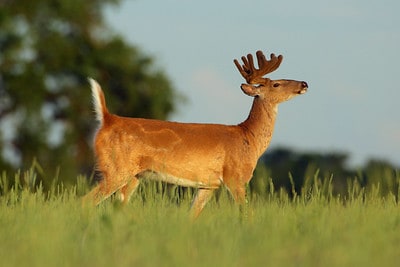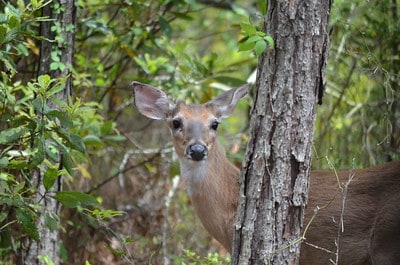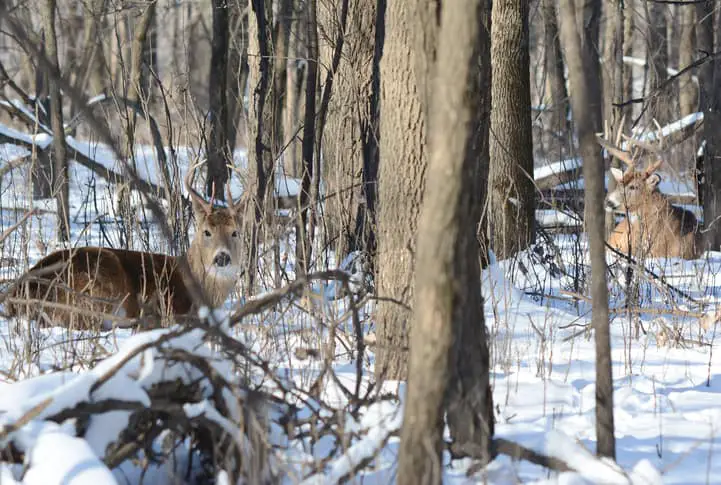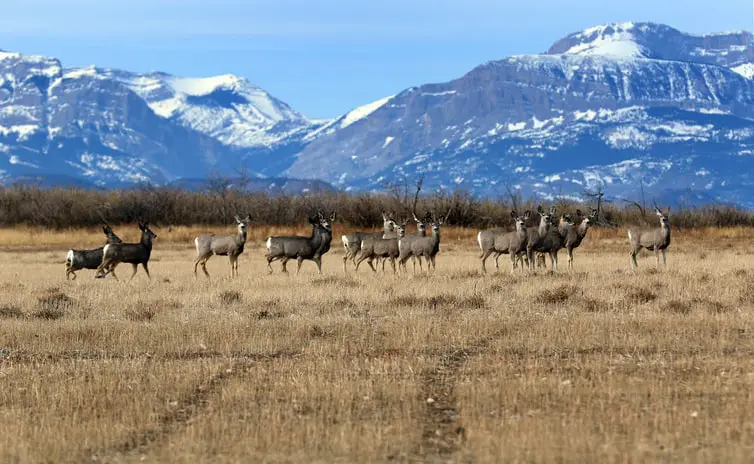Is there a real best wind speed for deer hunting? A happy medium between too slow to cover your approach and too fast to keep the deer moving?

What is the best wind speed for deer hunting?
The best wind speed for deer hunting is between 3 and 15 m.p.h. Slower and faster wind speeds deter deer activity because they provide less scenting information and either fail to cover the sound of a deer’s movements or inhibit a deer to detect the sound of approaching hazards.
What ever the wind is, when you hunt deer, always, always, play the wind!

Related: The best place to shoot a deer.
Why dead calm winds are bad for deer hunting.
A deer hunter may think calm winds favor them over the deer. The idea is that the hunter can hear the dear moving from a much greater distance, reduce their scent travel and dispersal, and cause less limb and leaf movement that might visually spook the deer.
That’s true, but the deer also seem very aware of this fact. It’s a mistake not to realize That deer are aware of the effect of their movements on the environment. Deer instinctively freeze because they understand movement draws attention. Deer move silently and carefully because they know noise can bring dangerous attention to them.
Dead calm winds are bad for deer hunting because they:
- Deprive the deer of one-third of its self-defense system; the scent of what is upwind of it.
- Produce no foliage movement to provide cover for their movements.
- They cannot move silently enough to remain unheard and undetected.
Related: The best deer hunting calibers.

Why high wind speeds are bad for deer hunting.
When the gusts have the trees swaying, deer like to bed down and wait for the wind to calm down. There is too much movement around them, it’s too loud to hear the stealthy approach of a predator, and the aromas around them are a confusing mix of distant and irrelevant scents that provide no valuable intelligence.
In the winter, a strong breeze creates a calorie consuming wind chill, something best avoided by hunkering down in a sheltered area.
High winds, between 16 and 29 m.p.h. are bad hunting days in the woods because:
- There is too much tree and branch movement to allow the deer to see an approaching threat.
- It is too loud to hear a potential predator.
- High winds deprive a deer of its ability to collect helpful scent information.
Related: Four easy to avoid deer hunting mistakes.

How deer react to sustained high winds.
Believe it or not, deer get used to high winds if they live in areas where such winds are common. Bucks in Wyoming and Michigan are far less affected by a strong gale than their brethren in Mississippi or Florida.
Deer subjected to sustained high winds also temporarily change their daily movement patterns. These deer flee the noise and motion of the woods and seek shelter in open fields.
Most deer, however, can still be hunted, no matter how strong the wind is blowing. All a determined hunter has to do is be willing to expose themselves to the gusts and find the natural windbreaks the deer are using to shelter in. Areas with pine trees, bottomlands near streams and rivers, and wind-protected sides of ridges—are all possible areas deer will locate to wait out the winds.
And the longer the winds howl, the more the deer eventually have to move at some time. Deer still have to eat and drink, though they may be willing and able to remain immobile for quite a long time. Bucks, during the rut, however, will have an irresistible need to move, and the weather be dammed.
Using the best wind speed for deer hunting to your advantage.
Now that you know the absolute best wind speed for deer hunting, use it to your advantage and hunt those days if it is all possible. But don’t let the fact that it’s too windy ever keep you home on a day you have free to hunt. Deer season is never a series of weeks; it is a matter of days you have available.
Use every day you have, and don’t be concerned about whether or not the wind speed for deer hunting is perfect.
Related: How to use deer scents.

